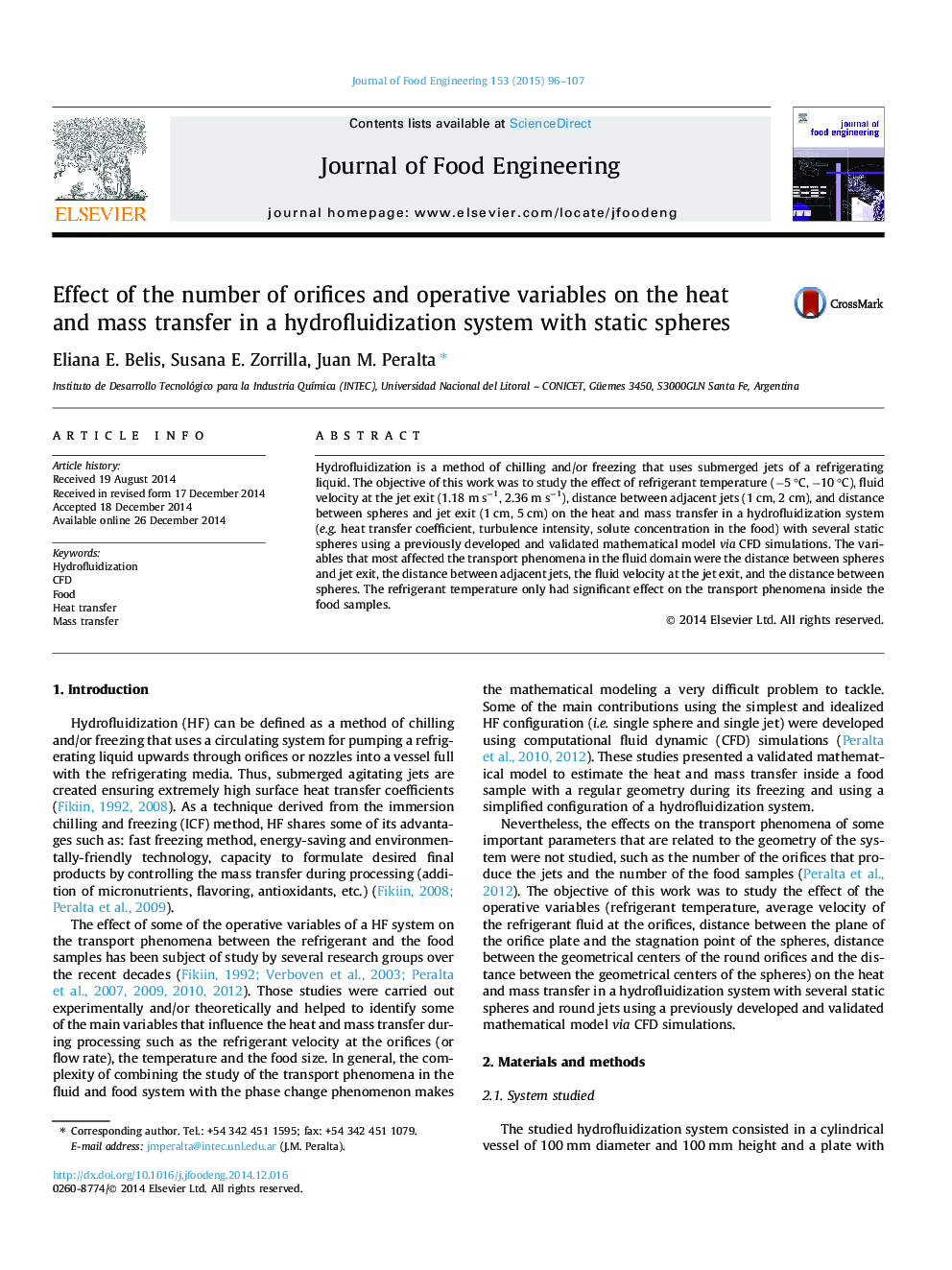| Article ID | Journal | Published Year | Pages | File Type |
|---|---|---|---|---|
| 222889 | Journal of Food Engineering | 2015 | 12 Pages |
•Transport phenomena in a hydrofluidization system via CFD simulations were studied.•The effect of operative variables on heat and mass transfer were considered.•A validated mathematical model in the food and the fluid was used.•Transfer in the fluid mainly affected by geometric variables and flow rate.•Transfer in the food mainly influenced by temperature and time.
Hydrofluidization is a method of chilling and/or freezing that uses submerged jets of a refrigerating liquid. The objective of this work was to study the effect of refrigerant temperature (−5 °C, −10 °C), fluid velocity at the jet exit (1.18 m s−1, 2.36 m s−1), distance between adjacent jets (1 cm, 2 cm), and distance between spheres and jet exit (1 cm, 5 cm) on the heat and mass transfer in a hydrofluidization system (e.g. heat transfer coefficient, turbulence intensity, solute concentration in the food) with several static spheres using a previously developed and validated mathematical model via CFD simulations. The variables that most affected the transport phenomena in the fluid domain were the distance between spheres and jet exit, the distance between adjacent jets, the fluid velocity at the jet exit, and the distance between spheres. The refrigerant temperature only had significant effect on the transport phenomena inside the food samples.
